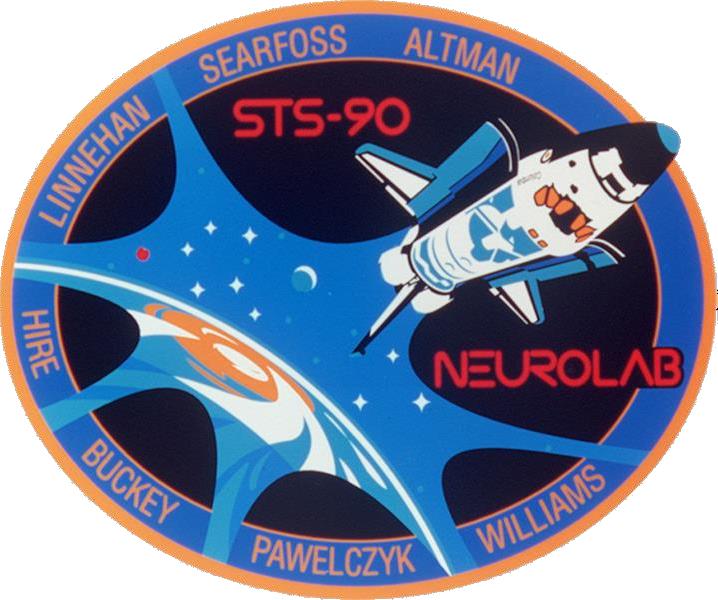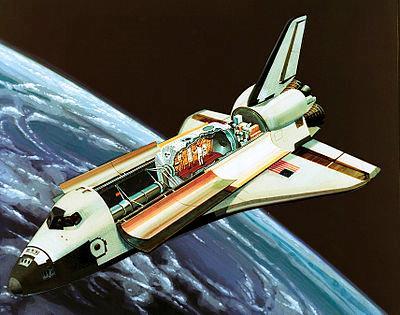Kathryn P. Hire
Spacelab Space Missions
Spacelab 031 - STS-90
Mission Name: Neurolab
Astronauts:
Command Pilot:
Richard A. Searfoss
(Third Space Flight)
Pilot:
Scott D. Altman
(First Space Flight) Mission Specialist 1:
Richard M. Linnehan
(Second Space Flight) Mission Specialist 2:
(First Space Flight)
Mission Specialist 3:
Dafydd Williams,
CSA
(First Space Flight) Payload Specialist 1:
Jay C. Buckey
(First Space Flight) Payload Specialist 2:
James A. Pawelczyk
(First Space Flight)
Spacelab was a reusable laboratory used on certain spaceflights flown by the Space Shuttle. The laboratory comprised multiple components, including a pressurized module, an unpressurized carrier and other related hardware housed in the Shuttle's cargo bay. The components were arranged in various configurations to meet the needs of each spaceflight.
Spacelab components flew on 22 Shuttle missions between November 1983 and April 1998. Spacelab allowed scientists to perform experiments in microgravity in Earth orbit.
Neurolab's 26 experiments targeted one of the most complex and least understood parts of the human body -- the nervous system. The primary goals were to conduct basic research in neurosciences and expand understanding of how the nervous system develops and functions in space. Test subjects were crew members and rats, mice, crickets, snails and two kinds of fish. This was a cooperative effort of NASA, several domestic partners and the space agencies of Canada (CSA), France (CNES) and Germany (DARA), as well as the European Space Agency (ESA) and the National Space Development Agency of Japan (NASDA). Most experiments were conducted in the pressurized Spacelab long module located in Columbia's payload bay. This was the 16th and last scheduled flight of the ESA-developed Spacelab module although the Spacelab pallets will continue to be used on the International Space Station. Read more about the Neurolab Spacelab Mission findings in this book.
Research was conducted as planned, with the exception of the Mammalian Development Team, which had to reprioritize science activities because of the unexpected high mortality rate of neonatal rats on board.
Other payloads included the Shuttle Vibration Forces experiment, the Bioreactor Demonstration System-04, and three Get-Away Special (GAS) canister investigations.
Working with engineers on the ground a week into the flight, the on-orbit crew used aluminum tape to bypass a suspect valve in the Regenerative Carbon Dioxide Removal System that had threatened to cut short the mission.
Mission Management Team considered, but decided against, extending the mission one day because the science community indicated an extended flight was not necessary and weather conditions were expected to deteriorate after planned landing on Sunday, May 3.
STS-90 Mission Specialist Kay Hire was Kennedy Space Center's first employee to be chosen as an astronaut candidate.





![]()
Study
Research
Main Index
Space Cosmology
Science Research
*
About
Science Research
Science Theories
Desk
Site Map
BookShelf
Copyright © by Nigel G Wilcox · All Rights reserved · E-Mail: ngwilcox100@gmail.com
Designed by Nigel G Wilcox
Powered By AM3L1A
Pages within this section: Spacelab 01-32
Spacelab D31-32
Sub-Menu
31
M
menu
32
8
SM
D










